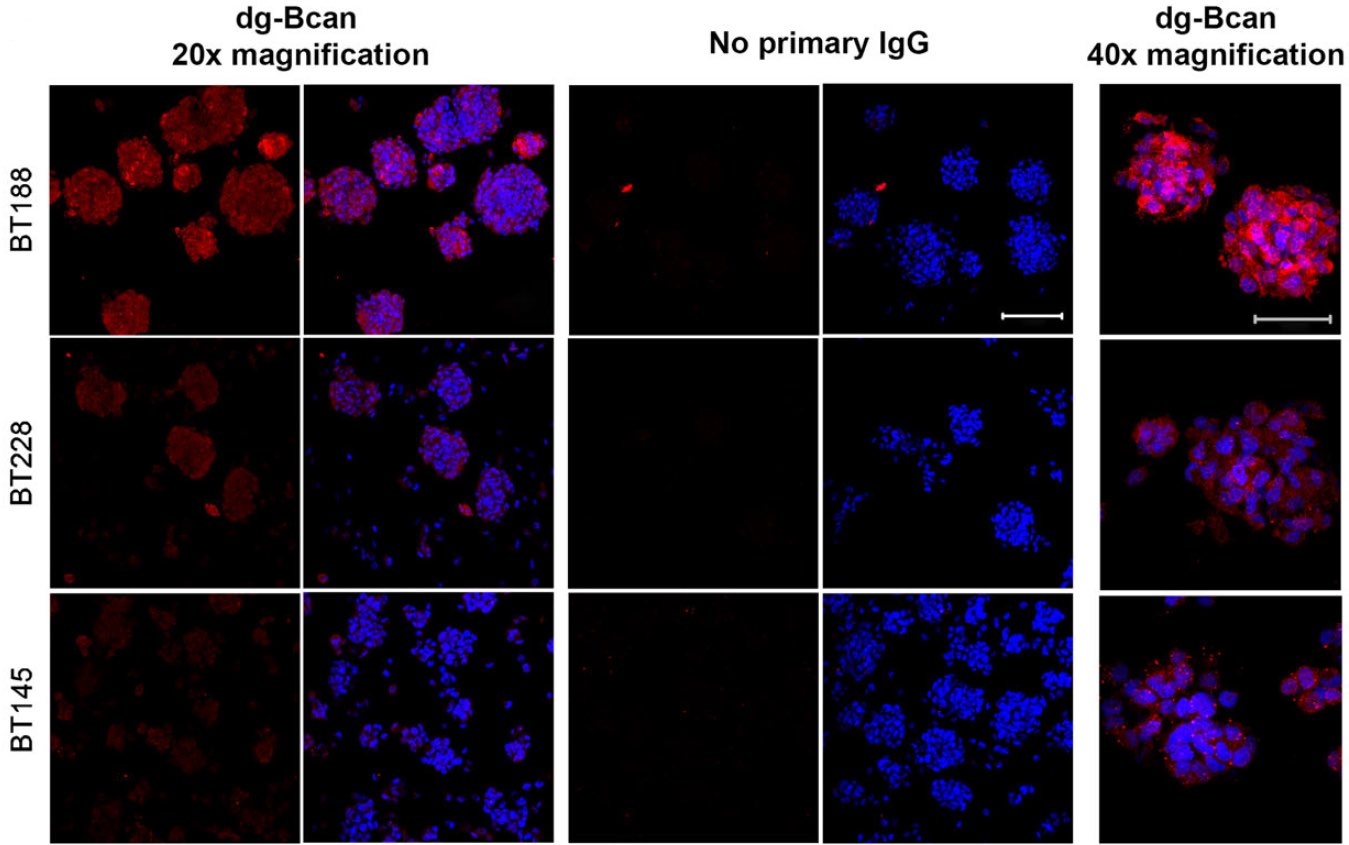
Targeting Glioblastoma Using a Novel Peptide Specific to a Deglycosylated Isoform of Brevican

Targeting Glioblastoma Using a Novel Peptide Specific to a Deglycosylated Isoform of Brevican
First published: 20 January 2021 https://doi.org/10.1002/adtp.202000244
Niklas von Spreckelsen,Colin M. Fadzen,Nina Hartrampf,Yarah Ghotmi,Justin M. Wolfe,Shipra Dubey,Bo Yeun Yang,Marie F. Kijewski,Shuyan Wang,Charlotte Farquhar,Sonja Bergmann,Mykola Zdioruk,J. Roscoe Wasserburg,Benjamin Scott,Emily Murrell,Fernanda C. Bononi,Leonard G. Luyt,Marcelo DiCarli,Martine L. M. Lamfers,Keith L. Ligon,E. Antonio Chiocca,Mariano S. Viapiano,Bradley L. Pentelute,Sean E. Lawler,Choi-Fong Cho
Abstract
Glioblastoma (GBM) is the most common and deadliest form of brain tumor and remains amongst the most difficult cancers to treat. Brevican (Bcan), a central nervous system (CNS)-specific extracellular matrix protein, is upregulated in high-grade glioma cells, including GBM. A Bcan isoform lacking most glycosylation, dg-Bcan, is found only in GBM tissues. Here, dg-Bcan is explored as a molecular target for GBM. In this study, a d-peptide library is screened to identify a small 8-amino acid dg-Bcan-Targeting Peptide (BTP) candidate, called BTP-7 that binds dg-Bcan with high affinity and specificity. BTP-7 is preferentially internalized by dg-Bcan-expressing patient-derived GBM cells. To demonstrate GBM targeting, BTP-7 is radiolabeled with 18F, a radioisotope of fluorine, and increased radiotracer accumulation is found in intracranial GBM established in mice using positron emission tomography (PET) imaging. dg-Bcan is an attractive molecular target for GBM, and BTP-7 represents a promising lead candidate for further development into novel imaging agents and targeted therapeutics.



